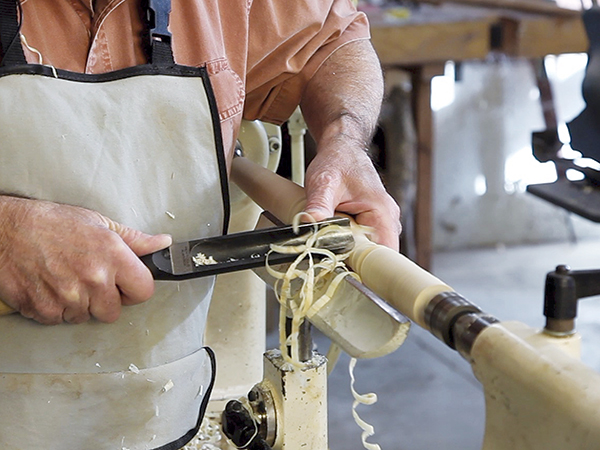
Almost any woodturner is familiar with turning bowls from green wood. Fewer know that spindles can be turned from green wood as well. Like bowls, it was a common practice before 1850. A commonly accepted factoid is that any spindle turned from green wood will check, or even split, and become unusable. This is not true, however, as long as you do not have a complete annular Turning spindles from green wood is a time-honored tradition. So is riving blanks from a tree trunk … our expert explains it all. ring anywhere in the billet you turn your spindle from. It is not difficult to gather a billet that does not have a complete annular ring — especially if you do it in the traditional way.
The Bodgers
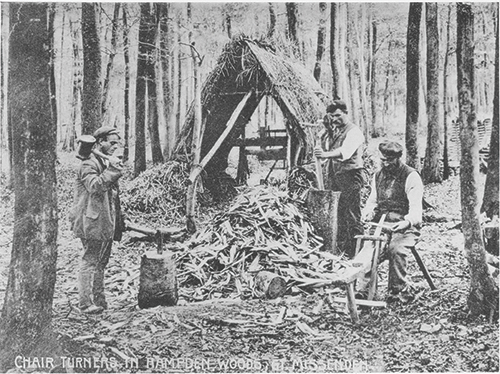
Dating back to at least 1700, the bodgers were itinerant English craftsmen living in the beech forests that covered the Chiltern Hills around High Wycombe, a town northwest of London in Buckinghamshire County. They felled the beech trees around their hut, bucked and rived billets from them, then turned Windsor chair spindles on pole lathes. They also wove very sturdy baskets from the green wood. Once they exhausted the trees around their hut, they moved their abode deeper into the forest. The bodgers were a viable trade up into the early 20th century. In modern times, the term bodger has come to mean an inept craftsman; however, the bodgers of High Wycombe were anything but: they were highly skilled turners. They sold their turnings at the town of Windsor, which is how historians believe the chair got its name.
Wood Shrinks as it Dries
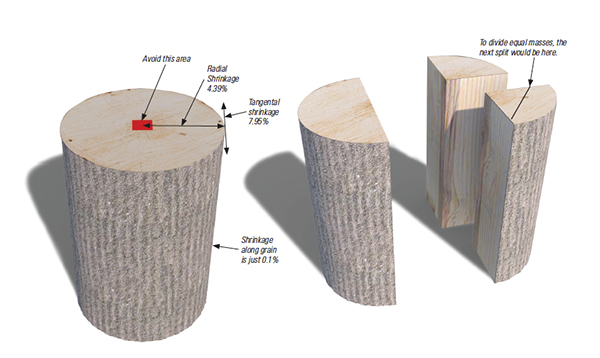
As you can see by the illustration, a green log shrinks about 4% in diameter, the radial shrinkage; while the loss in circumference is about 8%, the tangential shrinkage. Left as a log, stress will build around the rings to the point that the wood will check (crack) in one of two ways. Some woods will develop one or two big cracks running the length of the log; others will develop a myriad of small checks throughout the log.
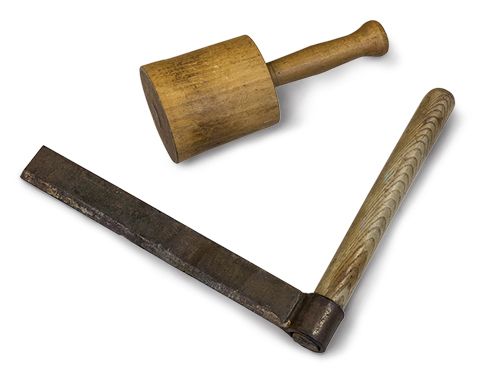
There is a huge advantage to riven billets: every grain fiber runs parallel end to end. This makes the resulting turning much stronger than one made from a sawn billet, which often has the grain running out the side. While wood is very strong under compression, it is less so along the grain. The sawn billet will fail completely if it splits along the grain, but the riven one will not. This allowed very dainty proportions in Windsor legs and is why early 18th century examples are still sound today.
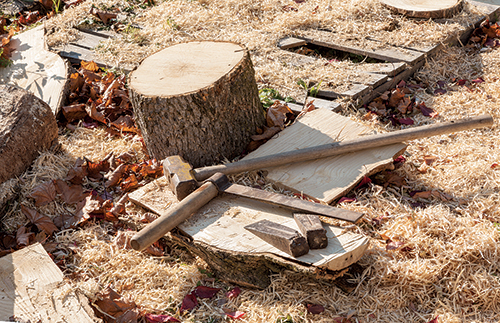
Riving wood is quite easy. The first order of business is to find a fresh green log of a workable wood. English Windsor chair makers used beech, but here in the Colonies we used maple or birch. If you can find trees of these species, they rive nicely and turn beautifully; they showcase the crisp edges and deep coves typical of the style. You want a log that is from the bole of a straight tree because it will be clear wood, free of knots. Windsor legs require a 20″-long billet, so cut this length from the fresh log. End grain loses water much faster than the rest of the log, which is covered by bark at this juncture. For this reason, the first 6″ or so often is checked and should be cut away for firewood.
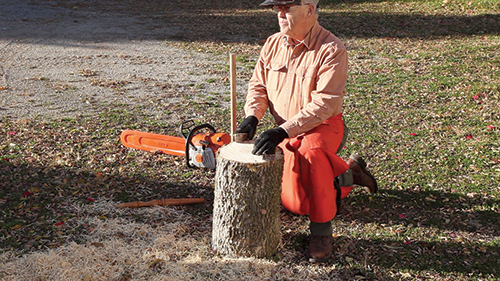
To rive a few spindles, you only need a sledgehammer and some wedges. For higher production numbers, a froe is a very handy tool. The important thing to remember as you start to rive the log section is some simple physics. To keep all the splits running true, you have to split equal masses. An off-center split will cause the split to run toward the lighter side, for the heavier side transmits more force back into the wedge than the lighter one. This often means placing the wedge or froe off-center on tapered pieces.
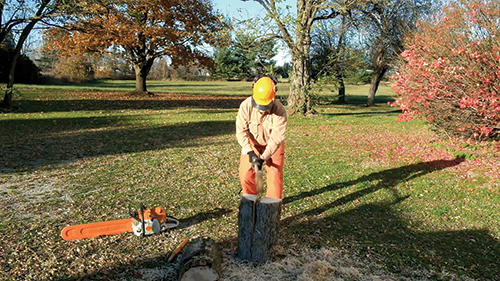
Our forefathers would have taken their freshly riven billets to a shaving horse and used a drawknife to take all of the sharp edges off and get them basically round. They would have then turned them to chair legs, stretchers and arm posts in a pole lathe. While it is fun to use the shaving horse and drawknife, thanks to the electric motor in our lathes we can skip this step if we want to. Just chuck it up and start turning. A good-sized modern spindle roughing-out gouge makes the polygonal billet round in no time at all. You can tell you are round because a continuous ribbon of wood will flow off of a sharp gouge.
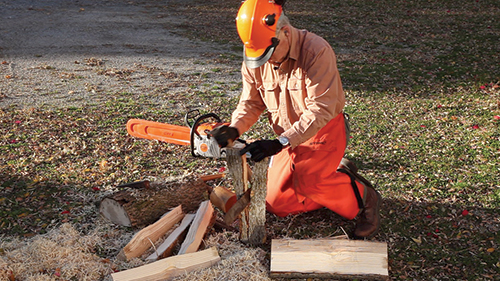
The finished spindle will generally have better surface finish than dry wood. Little to no sanding is necessary. As the spindle dries, it will shrink a bit oval and may check for a short distance at each end. Neither affects the utility or strength of the spindle. A dab of green wood sealer on the ends to slow down the rate of water loss from the end grain will virtually negate checking. Once dry, your turning can be sanded and finished in any way you choose. The average viewer will only be able to discern that the spindle is oval by feel. Visually, they look like any spindle.
Spindle turning some green wood is a fun exercise in confidence building. That great stream of shavings coming off any of the tools is a large part of it, I think. It allows a beginner to take risks that they would not take with dry wood. It is a fantastic way to teach children. Give it a try!






